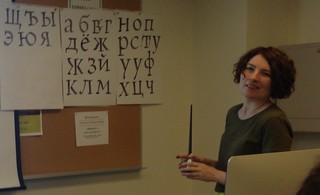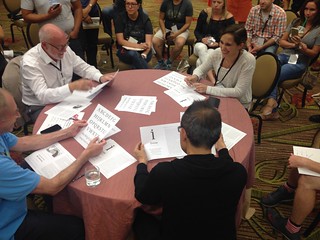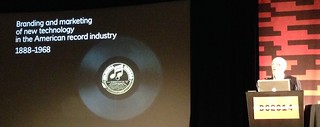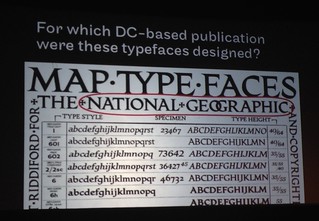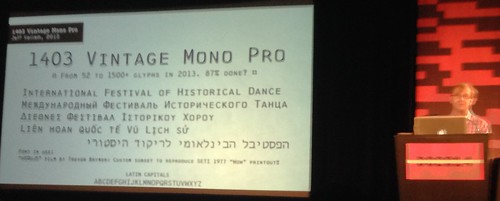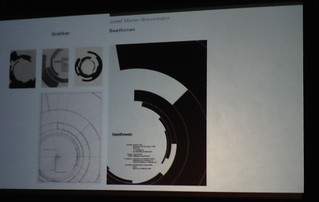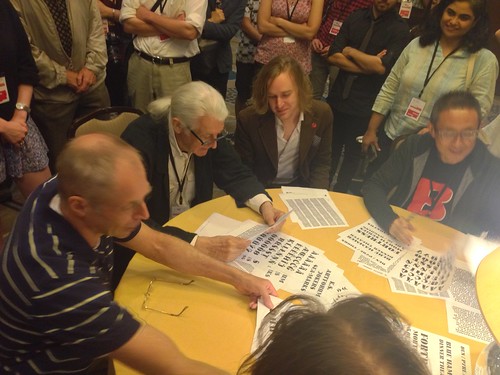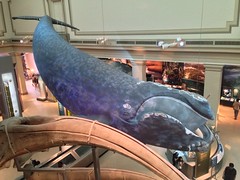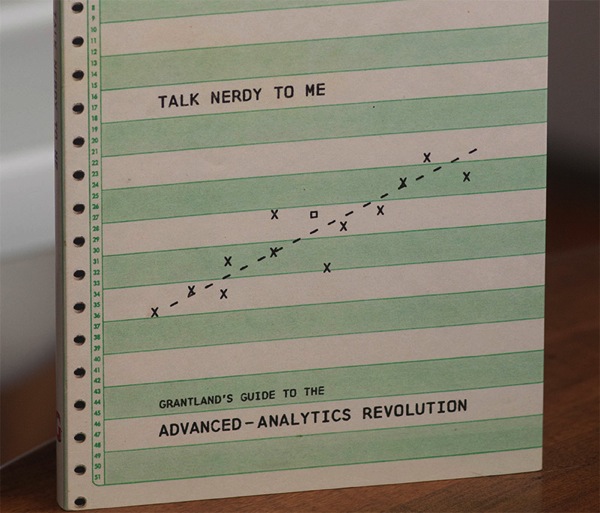The first Synthplex (@synthplex, @synthplex_burbank) was held in Burbank, California, USA, 28–31 March 2019, organized by Michael Learmouth & Michael Lehmann Boddicker (@MBoddInc). Overall, a good event that will hopefully continue. It was great to reconnect with old friends, meet new folk (sometimes remembering we’d met previously at a past NAMM or some other event), and connect over the love of music with a focus on synthesizers.
[ This trip report got delayed since I was busy finishing up a font engineering collaboration project with composer, orchestrator, & engraver Philip Rothman of NYC Music Services (@nycmusicservice) & Scoring Notes (@scoringnotes) to convert & create some music notation fonts based on Petaluma & Bravura from Dorico (@DoricoOfficial) to work in Sibelius (@AvidSibelius). The project was announced and released, today, 10 April 2019. ]
I had to miss Thursday, and finally arrived on Friday afternoon after the drive from the San Francisco bay area. I had hoped to see the Alternate Controllers Panel with Roger Linn (@roger_linn), Judd Miller, and Cory “C Pez” Pesaturo (@CoryPez), but arrived too late. Here are a few photos of that panel.
I stopped by the Sequential (@sequentialLLC) booth to say hi and then headed over for Dave Smith’s talk on Digital Through Analog, Then & Now. He used the fun Prophet X to demo some of the ideas he was talking about. One of his early demos used a Taiko drums patch that can be quite fun to play; then he adjusted filter envelopes, cutoff, etc., to totally change the the sound of the samples being used, just as you would with any oscillator sound source. I used that same base patch for an improv piece, Blind Cacophony, last month with my Prophet XL.
Tom Holkenborg (@Junkie_XL) gave the Keynote. It was fun to hear some of his film score stories, including working on Mad Max: Fury Road and Deadpool. He’s also scoring the upcoming Terminator film. At first, George Miller didn’t like the score for Fury Road. Then, later, found he understood what Tom was doing and really liked it. (Aside: I had a similar experience catching up with a former bandmate at a gig last year when he commented that he originally didn’t get what I was doing on the keyboard part for a song we recorded ages ago; then, he had listened to it the other day—it totally clicked and thought it was great.) Tom noted how important an organizing system is for film scoring and that he knows he can quickly locate a piece or cue among 3,000+ over the years. Agreed: organization is key. He also mentioned Score: A Film Music Documentary (@scoremovie) Still need to make time to watch it! Check out his Junkie XL tutorial and studio tour videos.
Tom recently started up SCORE Academy, an intensive program to help grow complete film composers held over a single academic year (September to July) in Tom’s studio. The program is free; students are responsible for their own living expenses in Los Angeles. Looks like a valuable experience for aspiring film composers. I’ve already mentioned it to one future potential student. Tom has one of the largest collection of vintage synthesizers. It was good to chat with him the next morning, too.
Caught the end of Drum & Lace (@DrumandLace) and Ronit Kirchman (@ronittweets) talking about Scoring for Film & Media. Good stuff. Alas, I could not be in LA when Drum & Lace played a gig with Suzanne Ciani (@sevwave) at the Los Angeles Public Library this past weekend, 6 April 2019. I will get to catch up with Suzanne at The Mezzanine in SF this Saturday, 13 April 2019. Let me know if you’ll also be attending.
On the way to see Allee Willis (@AlleeWillis) on Charting Your Own Path, I ran into songwriter Marie Kingsley (@marieisaking) whom I had met at an SCL (Society of Composers & Lyricists) event before NAMM 2018 and is now working for the SCL. Marie had also met Allee when she helped with @The_SCL seminar In It Together: The Music Team Behind The Color Purple [musical]. Fun to hear some of Allee’s stories. She wrote many wonderful songs you would recognize, including In the Stone and September (Earth Wind & Fire [@earthwindfire]), Neutron Dance (The Pointer Sisters [@PointerOfficial]), Theme from Friends, What Have I Done to Deserve This? (Pet Shop Boys [@petshopboys]), and beyond. You can hear some of the songs by selecting each swirling record icon at the top of her website. And, just in March 2019, September was added to the Library of Congress (@librarycongress) National Recording Registry! As was noted, everyone dances to September. Learned that Allee didn’t really play instruments, but could communicate her song ideas. When she talked about how she’d describe a sound she was hearing in her head and wanted someone to create, her descriptions totally made sense to me. One example was the sound of a ping pong ball crushed under the flapping wing of a pigeon. I can see part of why there were fun collaborations with her.
Allee will be receiving an award soon for most distinguished alum from the University of Wisconsin School of Journalism (@uw_sjmc). One of the quotes I liked was paraphrased from Maurice White when telling the ba-dee-ya story (@nprmusic @morningedition) of it’s use in the song September, “Never let the lyric get in the way of the groove.” She also told a story of Bob Dylan visiting and playing with the Prophet 10; somewhere there’s a recording of him singing Prince songs of the day, possibly around the early to mid 1980s. That would be fun to hear.
BT (@BT) held a Master Q & A Session plus a performance later in the day. He did a fun improvised performance with spoken word by @iainsthomas. He also mentioned love of the old Voyetra Sequencer Plus Gold that ran on DOS. There were some good things in that sequencer. Someday, I should get some samples of their .sng file format and possibly get a copy running, again, to see about writing code to parse it. He mentioned liking the book Microsound and other books by Curtis Roads. BT also created music and sounds for Shanghai Disneyland’s Tomorrowland. Fun explorations in surround and how the pieces of music interplay with each other as one walks around Tomorrowland, too. Listen to a peek into the Tomorrowland music, though not the same as being there and wandering about.
Later, chatted with BT about possible options at various levels for playing improvised electronic music. The SF bay area has a long history of improvised music with BayImproviser, SFEMF (San Francisco Electronic Music Festival), and the long-running series at Tom’s Place. I’d also consider collaboration with some of the orchestra music directors willing to explore.
Harold Faltermeyer on Axel F—History of a Synthesizer SMASH. He had a demo of his song Hot Stuff. Donna Summer recorded it the same day as he showed it to her. That was his introduction to the U.S. A December 2013 interview with him in @Dazed covers a little of that story. I was reminded that he also scored the film Fletch! Possibly related to that film or just from other stories, he mentioned Doctor Click and the accidental delay it could cause, but sometimes worked out. You had to start the Doctor Click a beat ahead of the down beat. One of the fun things about listening to these stories is being reminded of gear I hadn’t thought about in a long time.
Harold was using a CME Xkey. I usually have one with me, so I can sketch out musical ideas wherever I am. And it even supports polyphonic aftertouch. Later, with someone else, I had a nice chat about future development of a keybed with polyphonic aftertouch.
It was great to meet up with some more of the Sequential folk I hadn’t yet met, though had interacted with electronically. Always good to see Dave. He’s put together a great team of folk at Sequential. With the Prophet XL, I’ve been building some tools for my own sampling and sound design workflow that may end up being useful for others. It has had me writing MIDI parsing code, again, with flashbacks to writing similar code 30-odd years ago.
Some of the performances I managed to see included:
Gert Jalass of Moon Modular playing his 5U modular synth. More photos of Gert’s performance from Synthplex.
Kurt Kurasaki (@peff) nearly brought the house down, literally, as he found the resonance frequency of the room, especially the ceiling.
Sarah Belle Reid (@sarahbellereid) performed improvisational pieces with trumpets and the attached electronics controllers she designed and built, controlling electronics and synths using the trumpet. I had to miss her performance at Mills College (@MillsCollege) Songlines the other week, so it was great to get to see her perform at Synthplex. Here’s my @composerjk Instagram set of photos for her performance.
Listen to the archive of the live interview (41 min) with Alison Tavel (@alisontavel, daughter of Resynator inventor Don Tavel) and @TaraBusch of I Speak Machine on dublab radio about the Resynator and the documentary (@resynator) that Alison is creating. Tara demonstrated the Resynator live. The Resynator is a pitch tracking synth from the 1970s; use your voice, guitar, or whatever you have as input/control.
The performance by Mark Isham (@markisham) on trumpet, Vinnie Colaiuta (@vinniecolaiuta) on drums, and Laura Escudé (@thelauraescude) on violin & electronics was a highlight. All are amazing musicians. I recommend seeing any performance in which any one of them are involved. Perhaps they’ll take this trio on tour. Even though the mix had issues, it was still a wonderful performance. Laura’s playing was captivating. She also provided direction during the performance through her mic and Mark & Vinnie’s earpieces. Additionally, Laura is the CEO of Electronic Creatives (@electroniccreatives), leading a great team to “help artists realize their live shows.” If you’re putting together a tour, it may be worth talking with EC to see how they can help design and run your live show. They also organize MasterTrack, an intensive week-long music playback and performance design program, let by Laura Escudé. Great for music directors, touring professionals, and music school graduates. The 2019 week finished the week before Synthplex. Keep an eye out for the next one!
On Sunday, I focused on seeing the exhibitors, as I hadn’t made time to talk with them, yet.
I managed to catch up with Scott Jaeger of Industrial Music Electronics a few times during the weekend. It’s always good to chat with him. Alas, I missed seeing Juliana, though. At their booth, Scott showed me a couple of his latest modules, the Hertz Donut Mark III (digital oscillators with phase distortion and frequency modulation) and the Piston Honda Mark III (dual wavetable oscillators with 3-axis morphing). Both show waveforms as they’re being combined. From talking about that love and desire to have a reasonable oscilloscope, again, for creating & analyzing new samples and sounds in my studio, Scott mentioned the MORDAX Systems (@mordaxsystems) DATA module. It does look quite interesting, though they were one of the vendors I missed. While Scott & I were chatting about learning, I suggested the book Structures: Or Why Things Don’t Fall Down (1978) [Amazon link] by J.E. Gordon. An example of the author’s style: subtitle for a chapter: Soft materials and living structures—or how to design a worm.
While wandering about, I had some nice conversations with Kim Bjørn and Lars Juhl of Push Turn Move (@pushturnmove) who are now on their third book Pedal Crush (pre-orders currently on Kickstarter, funded in the first 12 minutes; I might have been one of those who ordered, then). Their other two books are worth checking out: Push Turn Move: Interface Design in Electronic Music and Patch & Tweak: Exploring Modular Synthesis (forward by Suzanne Ciani, @sevwave, whom I’ll be seeing on Saturday, 13 April 2019, performing at The Mezzanine in SF with some other Synthplex attendees).
It was good to see Jim Coker of Five12 (@jimAtFive12), again. The Vector Sequencer (video demo from Superbooth 18) I first saw at NAMM two years ago is now shipping! And there are stil some fun new additions coming along. I believe some of the Vector Sequencer work may eventually also end up in his software sequencer Numerology. The Vector has some fun possibilities. Worth considering if you like sequencers.
Jil Christensen (@jilchristensen) showed some of the Synclavier Digital (@synclavier_digi) iOS app Synclavier Go!, a recreation of the Synclavier for the Apple iPad along with the Synclavier Knob hardware. We talked some of what would be nice from a full hardware controller and considerations on interfaces that don’t simply mimic the hardware. Jil will also be performing at Moogfest (@Moogfest), 25–28 April 2019.
It was good to see some of the Sensel Morph (@senselinc) folk, again. I met Peter Nyboer and talked with others at NAMM. It’s possible that Joe Caputo (@computo) and I had met at a previous NAMM and synth gatherings many years ago. Joe also runs Voltage Control Lab (@VControlLab), a modular synthesis resource. I have some of the Morphs in my studio and some overlay plans to experiment with.
Max Keene showed off the Strange Electronic (@strangeelectronic) Lightstorm Module, synchronizing LED light strips and such via CV. The Kickstarter for the module and the Eurorack case that lights up is going on at the time of this writing. Later, I dropped by again. Henry Strange and I chatted for a bit, including showing their upcoming Strange Mic Controller, in development: a microphone attachment with sensors and buttons to allow the singer to control remote resources, e.g., adjusting vocal effects during the performance.
They shared the iConnectivity (@iConnectMIDI) booth. I’d been looking at the mio10 for some MIDI routing without the computer acting as a relay. Al Joelson from iConnectivity was helpful in answering questions. Henry Strange also suggested considering the iConnectMIDI4+ (that includes audio pass-thru) and can quickly be expanded using the USB host ports.Good mention by both Strange & used by Electronic Creatives (@electroniccreatives). I may still end up with the mio10 given the number of MIDI ports that may need routing at once to start.
I stopped by the Voltage Modular booth to see what they were up to and also because James Terris (@jamesterris) was helping out. He helped with their sound design. Voltage Modular is a virtual modular synth with third parties also developing new modules. I talked a little about the possibilities and interest in allowing modules to be developed in languages other than Java. Of course, it also reminded me of VCV Rack. Now, there are two options to send people to consider when interested in modular synths on the software side. James also designed some of the patches for the Sequential Prophet X.
Missed talking with a variety of exhibitors I had intended to see, including Moog folk (@moogmusicinc), Earthquaker Devices (@EarthQuakerDev), Roger Linn (@roger_linn), Keith McMillen Instruments (@keithmcmillen) and others. I had also intended to chat with the ASMAC (@ASCMAClosangeles)—American Society of Music Arrangers & Composers—folk and finally join. At NAMM 2018, I had talked with Kim Richmond about music notation fonts I’m designing; he also mentioned joining ASMAC. I did finally manage to visit @The_SCL (The Society of Composers & Lyricists) booth, though had meant to drop by earlier. I am a member, but usually only get to physically attend an event near NAMM and watch others from afar. Had a nice chat on Sunday with Chris Wirsig (@nocarriermusic) for a bit about current television and scores.  Alas, I missed talking with the Alliance for Women Film Composers (@TheAWFC) Women in Film Scoring but will pass them along to other composers. SST (Synthesizer Systems Technologies) was also there and provided some of the loaner synths for presentations.
Alas, I missed talking with the Alliance for Women Film Composers (@TheAWFC) Women in Film Scoring but will pass them along to other composers. SST (Synthesizer Systems Technologies) was also there and provided some of the loaner synths for presentations.
For those with whom I didn’t chat, I was wearing t-shirts with my Slanted Hall (@slantedhall) typeface designs. All of the fonts, including the in-progress music notation fonts, were drawn by me.
Other posts about Synthplex:
- Sound on Sound (@soundonsoundmag) report Synthplex 2019: ‘Everything Synthesizer’ by Julian Colbeck of Keyfax NewMedia.
- Synthtopia (@Synthtopia) articles tagged with Synthplex 2019.
- Matrixsynth’s articles tagged with Synthplex.
- SonicState’s (@sonicstate) Live Blog from Synthplex 2019.
- Some of my photos on Flickr.
- John L. Rice’s (@imjohnlrice) photos on Flickr.
- Instagram: @synthplex_burbank plus #synthplex and #synthplex2019
- Twitter: @synthplex plus #synthplex and #synthplex2019
- Facebook: @synthplex plus #synthplex and #synthplex2019
- YouTube synthplex search.
Of course, I left out best parts: conversations and connecting with folk outside of sessions. Always my favorite part of any gathering or conference. Hope to continue those discussions. Stay in touch and let me know when you might be up in the SF bay area, California, USA or are up for collaborating.
Please let me know if any corrections are needed. I look forward to seeing folk at future music and synth gatherings and gigs.
Hopefully, next time, Cary Roberts (@retrosynth) will be able to attend—he was traveling that weekend—along with some other synth folk we know from the bay area and beyond. I think Brandon Daniel (@bdu808), Elaine Walker (@ewalker, ZIA, electronics, vertical keyboards, & microtonal music), and others might enjoy attending, also.
Now, back to working on new music, typeface designs, choreography for a new musical, creating new synth tools, font editor/tools coding, and preparing to record new compositions.
—Jeff Kellem (@composerjk / @slantedhall)
1403 Vintage Mono Pro typeface specimen


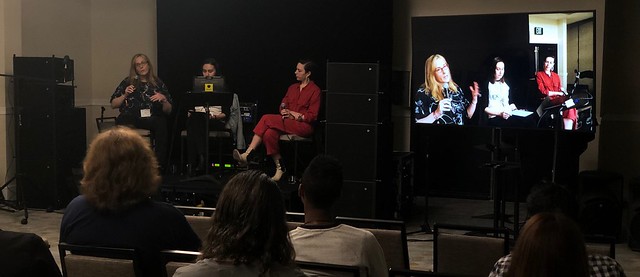











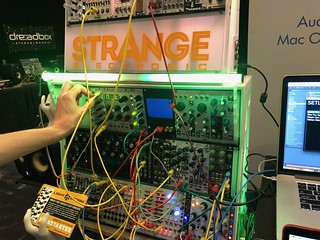

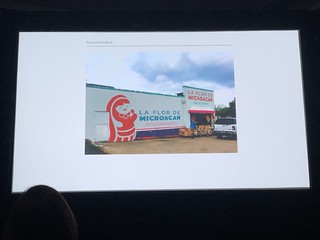
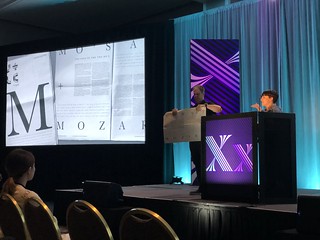
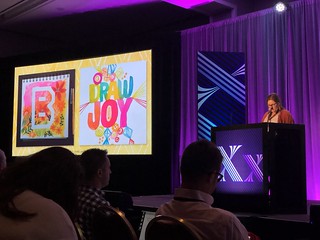
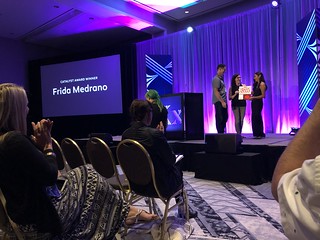
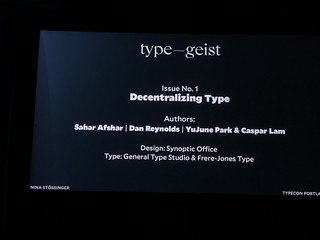
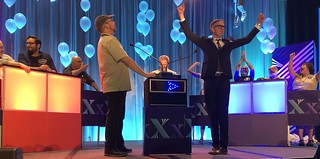
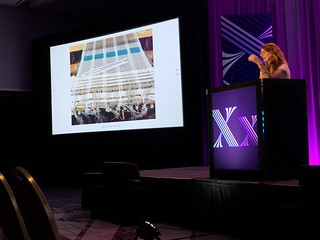

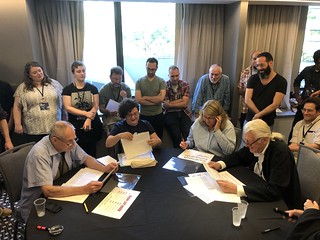

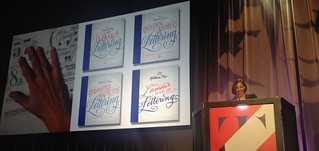
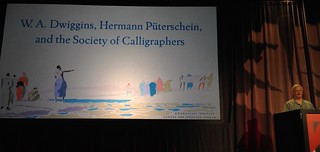


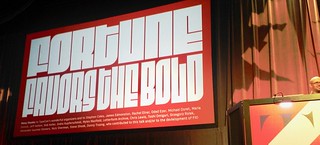
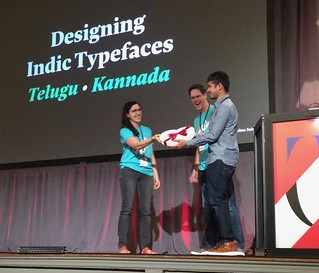



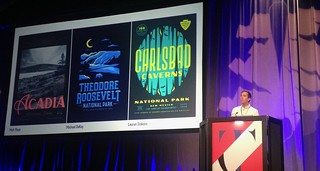
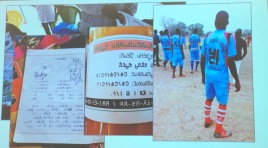
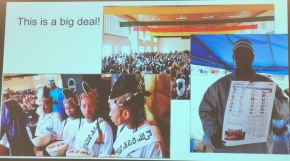 I ended up at the IMUG presentation on the ADLaM script. Craig Cornelius gave an introduction to the script and its history with stories of how he got involved plus his recent attendance at the 3rd ADLaM Conference in Mamou, Guinea, 5–8 January 2018. Over 800 people attended the conference from the Democratic Republic of the Congo to Mauritania and Chad to Liberia, plus Angola, Kuwait, Belgium, Spain, USA, and beyond. After Craig’s presentation, Ibrahima & Abdoulaye Barry (creators of the ADLaM script) joined in via video chat for the question and answer part of the evening. They started creating the script in 1989 when they were ages 10 and 14.
I ended up at the IMUG presentation on the ADLaM script. Craig Cornelius gave an introduction to the script and its history with stories of how he got involved plus his recent attendance at the 3rd ADLaM Conference in Mamou, Guinea, 5–8 January 2018. Over 800 people attended the conference from the Democratic Republic of the Congo to Mauritania and Chad to Liberia, plus Angola, Kuwait, Belgium, Spain, USA, and beyond. After Craig’s presentation, Ibrahima & Abdoulaye Barry (creators of the ADLaM script) joined in via video chat for the question and answer part of the evening. They started creating the script in 1989 when they were ages 10 and 14.